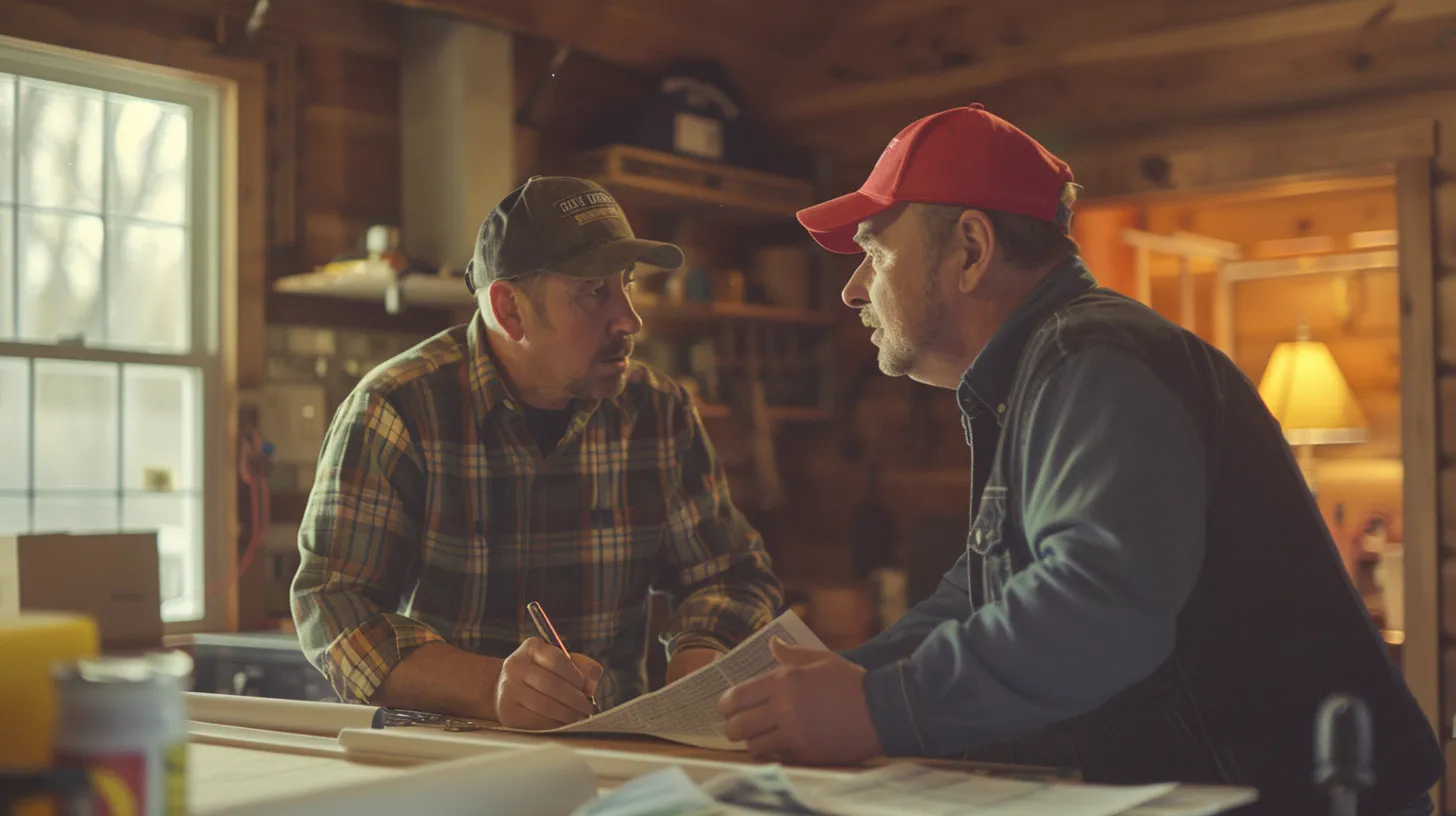
Poor drainage might be the hidden culprit behind many home waterproofing failures. This article will explore the connection between inadequate yarddrainage and various waterproofing problems, identify common drainage issues, and provide practical solutions for homeowners. By addressing these concerns, readers will learn how to protect their homes from water damage and enhance their property’s longevity. Homeowners struggling with flooding or moisture issues will find valuable strategies to improve drainage and waterproofing effectiveness, ensuring a safer living environment.
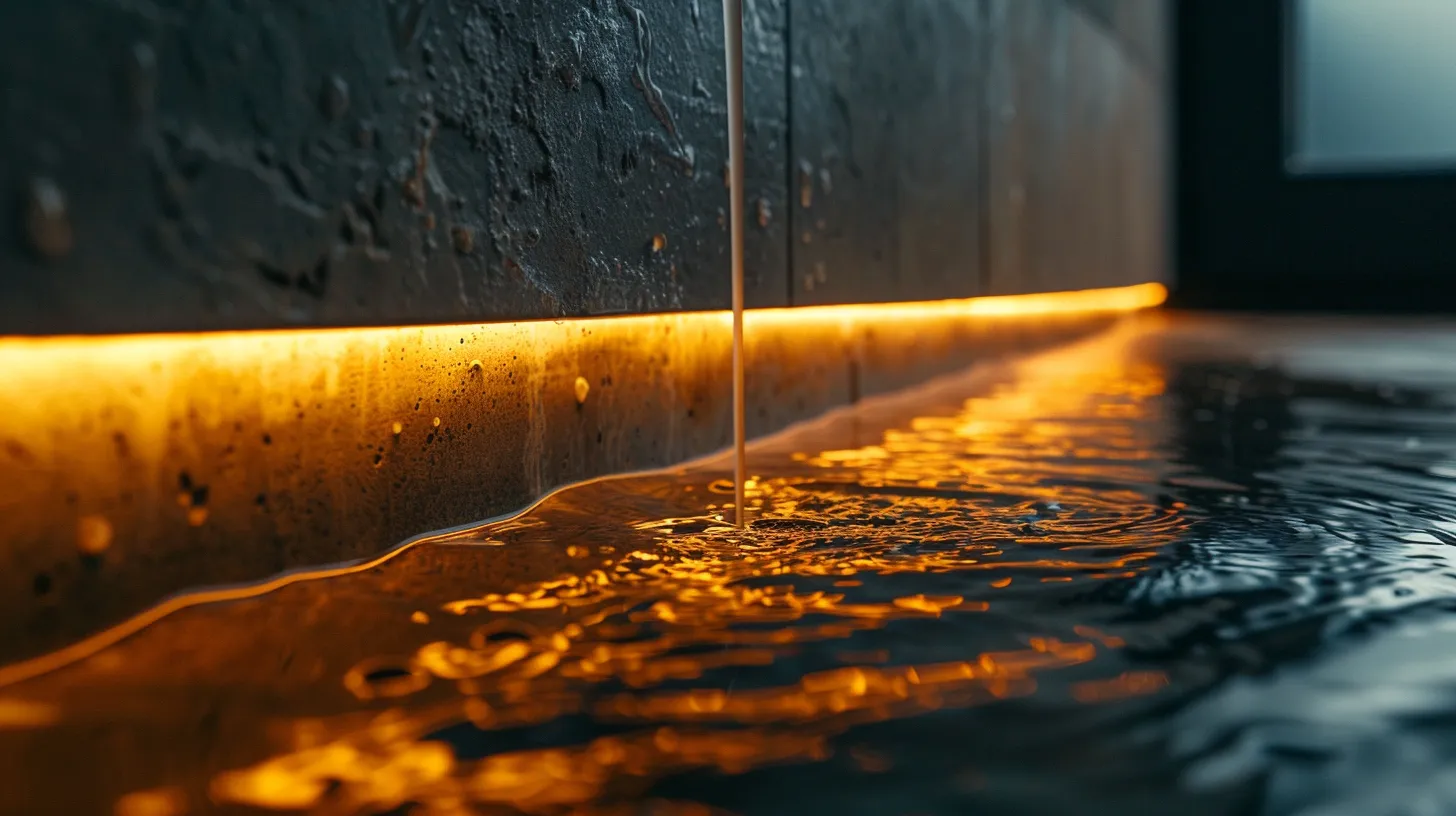
Inadequate yard drainage can lead to significant problems with home waterproofing. Water accumulation around the foundation increases hydrostatic pressure, putting stress on walls and floors. Soil saturation negatively affects foundation stability, often resulting in basement moisture and unpleasant odors. Early detection of these issues, along with proper landscape grading and effective basement waterproofing service springfield mo solutions, is essential for maintaining a dry and secure crawl space.
Term:
Water accumulates around a home’s foundation primarily due to poor drainage systems, often exacerbated by the presence of debris such as leaves and soil particles. When rainfall occurs, water collects in poorly graded areas or improperly positioned trenches, leading to flooding near the base of structures. This saturated soil increases hydrostatic pressure against walls, making it vital for homeowners to consider professional basement waterproofing methods, such as applying a high-quality sealant to prevent water ingress and further damage.
Hydrostatic pressure refers to the force exerted by water in saturated soil against the foundation walls of a home. In areas like Kansas, where heavy rainfall can occur, this pressure increases significantly when drainage is inadequate, leading to leaks and moisture intrusion in basements. Homeowners facing increased risk of basement water problems should seek a free estimate for waterproofing solutions that effectively manage hydrostatic pressure, protecting their property from costly damage.
Soil saturation significantly impacts the stability of a home’s foundation, as excess waterlogged soil can lead to settling or shifting that compromises structural integrity. When a yard lacks proper drainage, water pools around the foundation, increasing hydrostatic pressure and promoting issues like floor cracks and pest infiltration. Installing a graveldrainage system can divert excess water away from the property, reducing the risk of staining and damage to surfaces while ensuring long-term stability for homeowners concerned about foundation health.
Homeowners should be vigilant for early signs of drainage-related waterproofing challenges, such as increased humidity levels that may necessitate the use of a dehumidifier. Observing water stains or discoloration on walls and floors, particularly near joists, can indicate moisture intrusion. Additionally, issues with foundation membranes or the failure of a sump pump can exacerbate these problems, making it essential to address soil grading and drainage solutions promptly to maintain a secure and dry living environment.
Landscape grading plays a critical role in effectively directing water away from a home’s foundation, thus preventing wet basement issues. Proper grading involves sloping the land away from the structure, which minimizes erosion and ensures that rainwater flows toward drains or designated areas instead of pooling near the foundation. Homeowners facing challenges with basement water issues should consider consulting a professional to evaluate their landscape grading, especially if they experience symptoms such as dampness or an overloaded sump pump, as timely adjustments can significantly enhance the home’s waterproofing integrity.
Inadequate drainage leads to problems that can ruin a home. Next, it’s time to uncover the common reasons for poor drainage around your property.

Common causes of poor drainage around a property significantly contribute to waterproofing issues. Clogged or improperly installed gutters and downspouts can prevent water from redirecting effectively. Additionally, incorrect yard slope or negative grading exacerbates water accumulation. Compacted soil impedes proper absorption, while problems with existing subsurface drainage systems further complicate matters. Nearby construction or landscape alterations can also impact drainage patterns, making it essential to address these factors to protect basement integrity and maintain an effective vapor barrier.
Clogged or improperly installed gutters and downspouts often serve as primary contributors to poor drainage around a property, leading to potential waterproofing issues. When gutters become blocked, rainwater cannot be redirected away from the foundation, resulting in water intrusion that can compromise structural integrity. Regular inspection and maintenance of these systems are essential, as neglect can lead to capillary action, where moisture is drawn up through foundation walls, necessitating effective crawl space waterproofing solutions to protect the home.
Incorrect yard slope or negative grading can significantly contribute to drainage problems around a property. When the landscape inclines towards the foundation instead of away from it, water becomes trapped, leading to increased moisture levels that can compromise walls and wooden structures. Homeowners should consult an expert for evaluation and possible regrading solutions to ensure that rainwater flows appropriately, reducing the risk of water intrusion and enhancing long-term property integrity. For inquiries, homeowners can reach out directly via telephone number for professional assistance.
Compacted soil can severely hinder proper water absorption, leading to critical challenges for homeowners. In conditions of excessive heat and limited moisture absorption, water tends to pool around the foundation rather than draining away efficiently. This accumulation increases the risk of basement water problems, fostering an environment conducive to mold growth, which may trigger allergy symptoms and compromise air quality in crawl spaces.
Issues with existing subsurface drainage systems often lead to significant waterproofing challenges for homeowners. For instance, a poorly functioning swale can cause water to seep into the foundation walls, resulting in problems like efflorescence on concrete surfaces, which indicates moisture intrusion. Homeowners in Springfield, MO, should consider consulting a professional waterproofing service to assess their drainage systems, as timely interventions can prevent further damage and maintain the integrity of their properties.
Nearby construction or landscape changes can significantly impact drainage around a property, often leading to increased water damage. For example, excavation or grading alterations may redirect water flow toward a home’s foundation, creating a higher risk of mildew growth in basements. Homeowners experiencing these issues can benefit from professional basement waterproofing services to mitigate moisture problems and enhance air quality with an air purifier, while also deterring pests that thrive in damp environments.
Poor drainage brings its own set of problems. Next, the focus shifts to the specific waterproofing issues that arise when water cannot escape as it should.
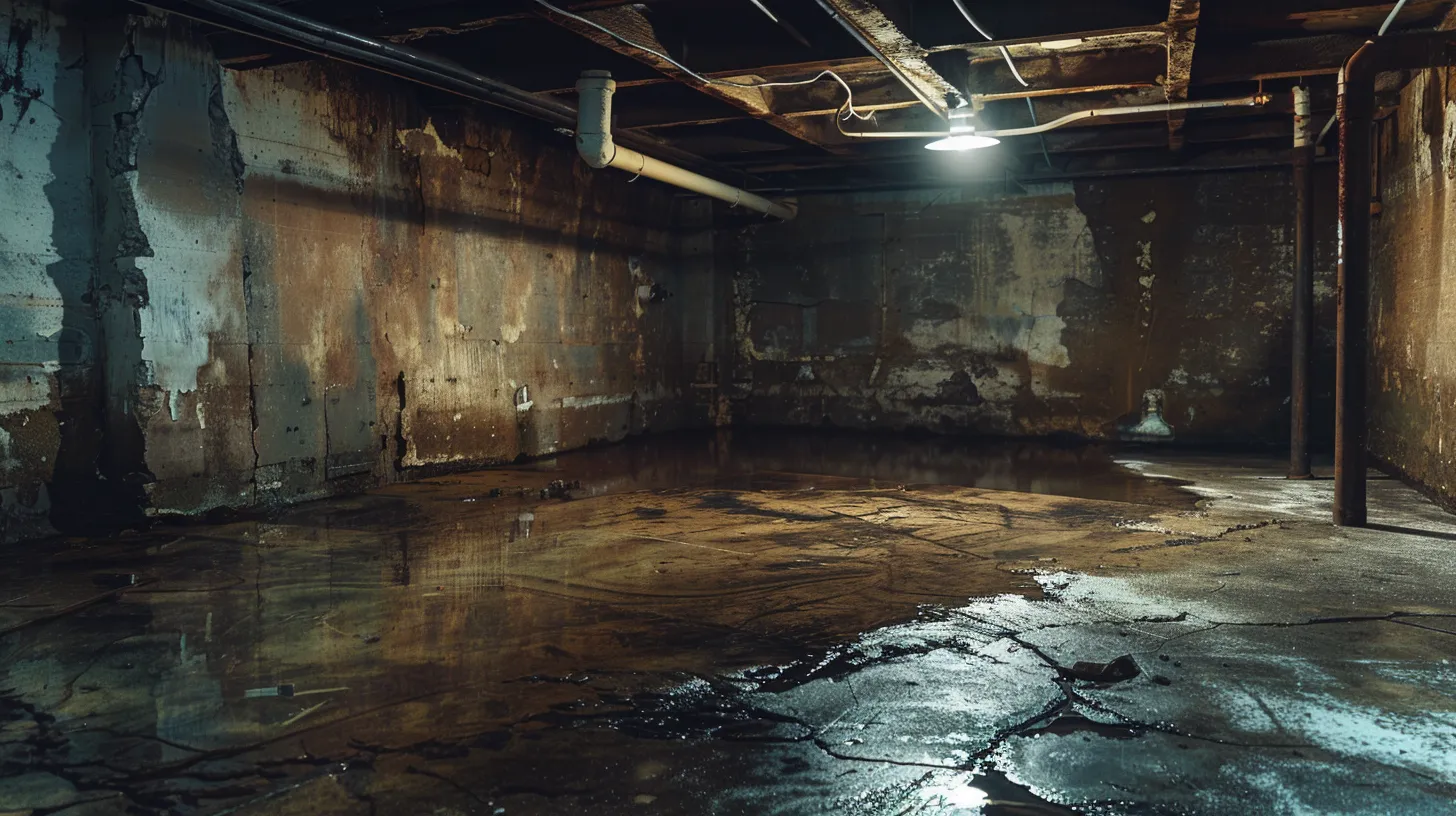
Faulty drainage can lead to various waterproofing problems that significantly impact a home’s integrity. Homeowners may face basement leaks and flooding incidents, crawl spacemoisture buildup, and mold growth. Inadequate drainage can also cause foundation cracks, posing structural damage risks, while damaging landscaping and accelerating soilerosion. Furthermore, it contributes to increased humidity levels indoors, impacting air quality and comfort.
Addressing these issues is crucial for maintaining a safe and healthy home environment. Understanding these specific problems enables homeowners to implement effective solutions, such as installing tiledrainage systems, to mitigate water-related risks and enhance the overall waterproofing of their properties.
Basement leaks and flooding incidents often stem from inadequate drainage systems surrounding a home. When water accumulates due to poorly designed landscapes or clogged gutters, it can seep into the basement, leading to significant moisture problems that risk mold growth and structural damage. For homeowners, addressing these drainage issues early by implementing comprehensive waterproofing solutions, such as interior drainage systems or sump pumps, is critical to preventing costly repairs and ensuring a dry, healthy living space.
Crawl spacemoisture buildup frequently arises from inadequate drainage around a home, creating a conducive environment for mold growth. This excess moisture can lead to significant health risks, including allergies and respiratory issues, as mold spores disperse throughout the living areas. Homeowners facing this challenge should consider professional waterproofing solutions, such as vapor barriers and dehumidifiers, to manage humidity levels effectively and protect their home’s structural integrity from the damaging effects of mold.
Foundation cracks are a common consequence of poor drainage, which can lead to substantial structural damage over time. When water accumulates around a home due to inadequate drainage systems, it increases soil pressure against foundation walls, resulting in cracks and shifts that compromise structural integrity. Homeowners should prioritize regular maintenance and effective waterproofing solutions, such as installing a drainage system, to mitigate these risks and safeguard their property against costly repairs.
Faulty drainage can have detrimental effects on landscaping and contribute to soilerosion, which poses serious concerns for homeowners. When water accumulates in unwanted areas, it washes away mulch, topsoil, and vegetation, compromising the aesthetic appeal of yards and gardens. Implementing effective drainage solutions, such as proper grading and installing drainage systems, can help redirect water flow and protect landscaping investments, ensuring that outdoor spaces remain healthy and visually appealing.
Increased humidity levels inside a home are often a direct consequence of poor drainage around the property. When water accumulates due to inadequate yarddrainage, moisture can seep into the home, elevating humidity levels that lead to discomfort and mold growth. Homeowners facing this issue should consider effective solutions such as installing dehumidifiers or enhancing their drainage systems to maintain a healthier indoor environment.
Faulty drainage is just the start of the problem. Homeowners can take action now, transforming their spaces with practical methods that ensure water flows where it should.

Improving drainage around a home is vital for preventing waterproofing challenges. Homeowners can optimize gutter and downspout performance to ensure efficient water diversion. Implementing effective landscape grading techniques will direct water away from foundations, while installing French drains or channel drains can mitigate excess water accumulation. Utilizing dry wells for water management and selecting appropriate plants for absorption further enhance drainage capabilities. Each of these strategies plays a crucial role in maintaining a dry and secure living environment.
Optimizing gutter and downspout performance is essential for effective drainage management around a home. Homeowners should ensure that gutters are free of debris and functioning properly, allowing rainwater to flow smoothly and directing it away from the foundation. Additionally, positioning downspouts to discharge water at least five to ten feet from the home can significantly reduce the risk of water accumulation and waterproofing issues:
Implementing effective landscape grading techniques is vital for addressing drainage issues that lead to waterproofing challenges in homes. Proper grading involves creating a slope away from the foundation, which helps facilitate the smooth flow of rainwater towards designated drainage areas. Homeowners can enhance their landscape by ensuring that soil is adequately raised and compacted, as this not only prevents water pooling but also minimizes the risk of basement moisture and foundation damage, contributing to a drier and healthier living environment.
Installing French drains or channel drains offers homeowners an effective method for managing excess surface water, thereby mitigating potential waterproofing issues. These drainage systems function by redirecting water away from vulnerable areas, such as basements and foundations, reducing hydrostatic pressure that can lead to moisture problems. Proper installation of these drains ensures that water flows through perforated pipes, preventing accumulation and addressing underlying drainage challenges, which ultimately protects the integrity of the home.
Utilizing dry wells is an effective strategy for managing excess water around residential properties, enhancing drainage and reducing waterproofing issues. These underground structures collect runoff water, allowing it to gradually seep into the surrounding soil rather than pooling near foundations. For homeowners facing chronic drainage challenges, installing a dry well can significantly mitigate moisture-related problems, protecting their properties from potential damage while promoting better air quality in the living spaces above.
Selecting appropriate plants for water absorption can significantly enhance drainage around a property, helping to mitigate waterproofing issues. Native plants, such as sedges or rushes, are particularly effective as they are adapted to local soil and climate conditions, requiring less water and providing better absorption of excess moisture. Incorporating these plants into a landscape design not only aids in managing drainage but also improves the overall aesthetic of the yard while protecting the foundation from water-related problems:
Sometimes, even the best drainage fixes fall short. When that happens, advanced waterproofing solutions may be the key to keeping water at bay.
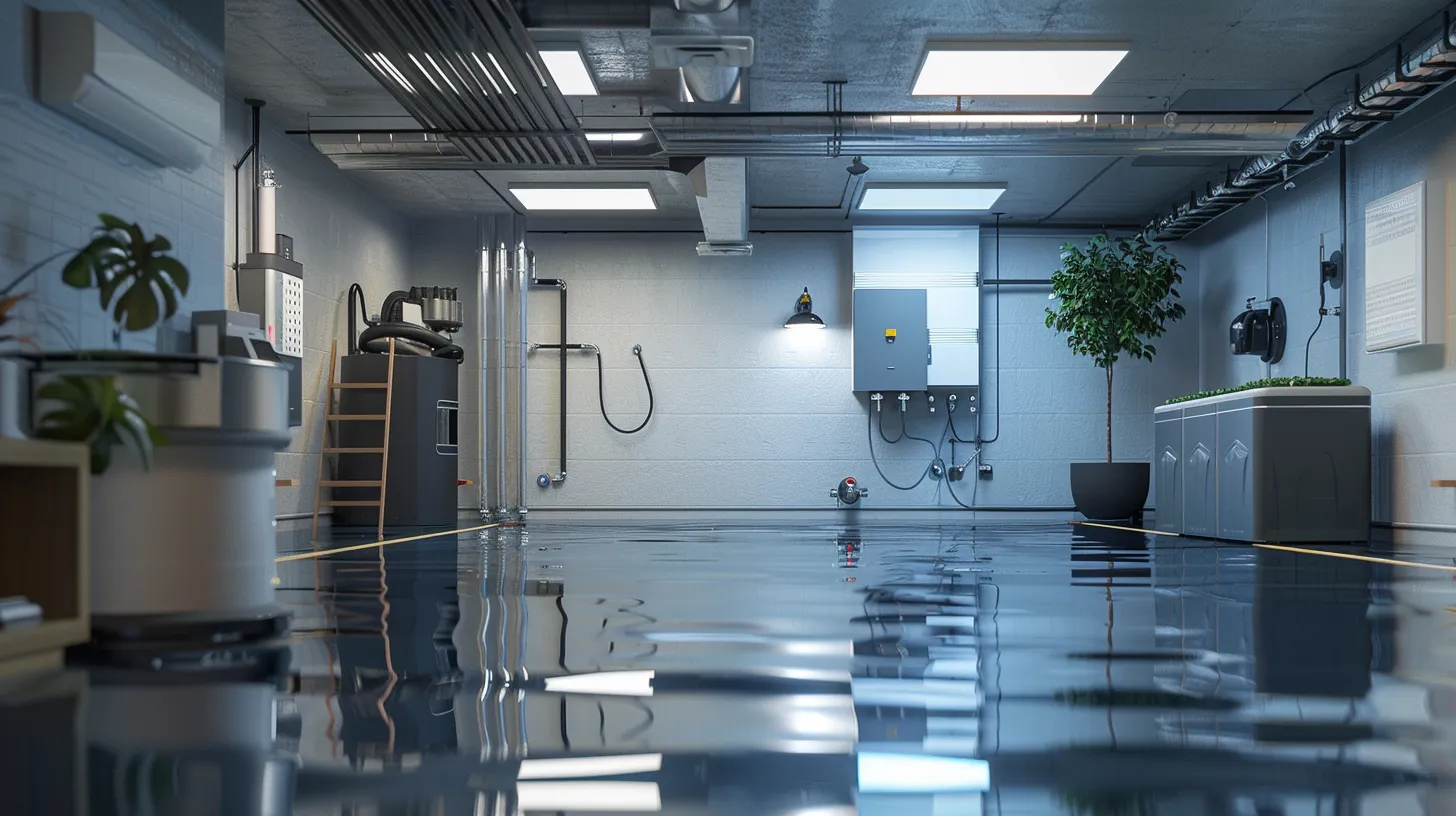
When drainage improvements alone do not resolve waterproofing issues, homeowners can turn to advanced solutions to safeguard their properties. This section will discuss various interior waterproofing systems, including sealants and membranes, and explore exterior waterproofing excavation techniques. It will also cover sump pump installation and maintenance guidelines, foundation crack repair techniques, and the importance of dehumidification systems for maintaining dry basements and crawl spaces.
Interior waterproofing systems, such as sealants and membranes, serve as essential components for managing moisture within a home, especially when drainage improvements fall short. These products create a barrier that prevents water infiltration through basement walls and floors, effectively addressing issues caused by poor drainage. Homeowners should consider options like liquid sealants or rigid membranes tailored for their specific needs, ensuring long-lasting protection against moisture and associated damage.
Exterior waterproofing excavation involves removing soil from around the foundation to apply protective membranes or coatings that thwart moisture intrusion. This process not only improves drainage around the home but also establishes a robust barrier that can prevent water from damaging walls and causing structural issues. Homeowners facing persistent waterproofing challenges should consider this method, as it addresses the underlying issues of poor drainage effectively.
Sump pumps serve as a critical line of defense against water intrusion in homes with poor drainage. When installing a sump pump, homeowners should ensure it is placed in the lowest part of the basement or crawl space, allowing it to efficiently collect and divert excess water. Regular maintenance, including checking the float switch, cleaning the filter, and testing the pump for functionality, is essential to ensure long-term reliability and performance, protecting the property from potential moisture-related damage:
Addressing foundation cracks is crucial for preventing further damage linked to waterproofing issues. Techniques such as epoxy injections can effectively seal cracks from the inside, providing a strong bond that resists water infiltration and reinforces the structural integrity of the foundation. Additionally, other methods like polyurethane foam can expand within the cracks, creating a waterproof barrier that prevents moisture from penetrating and exacerbating damage, ensuring that homeowners can maintain a dry and secure living environment.
Dehumidification systems are essential for maintaining optimal humidity levels in basements and crawl spaces, particularly when drainage improvements fail to resolve moisture-related issues. These systems actively remove excess moisture from the air, helping to prevent mold growth and structural damage associated with damp conditions. Homeowners should consider investing in energy-efficient dehumidifiers that are appropriate for the size of the space, as this can significantly enhance indoor air quality and safeguard the home against potential health risks.
After implementing advanced waterproofing solutions, the next step lies in preserving these systems for the long haul. Understanding how to maintain drainage and waterproofing will ensure lasting protection and peace of mind.
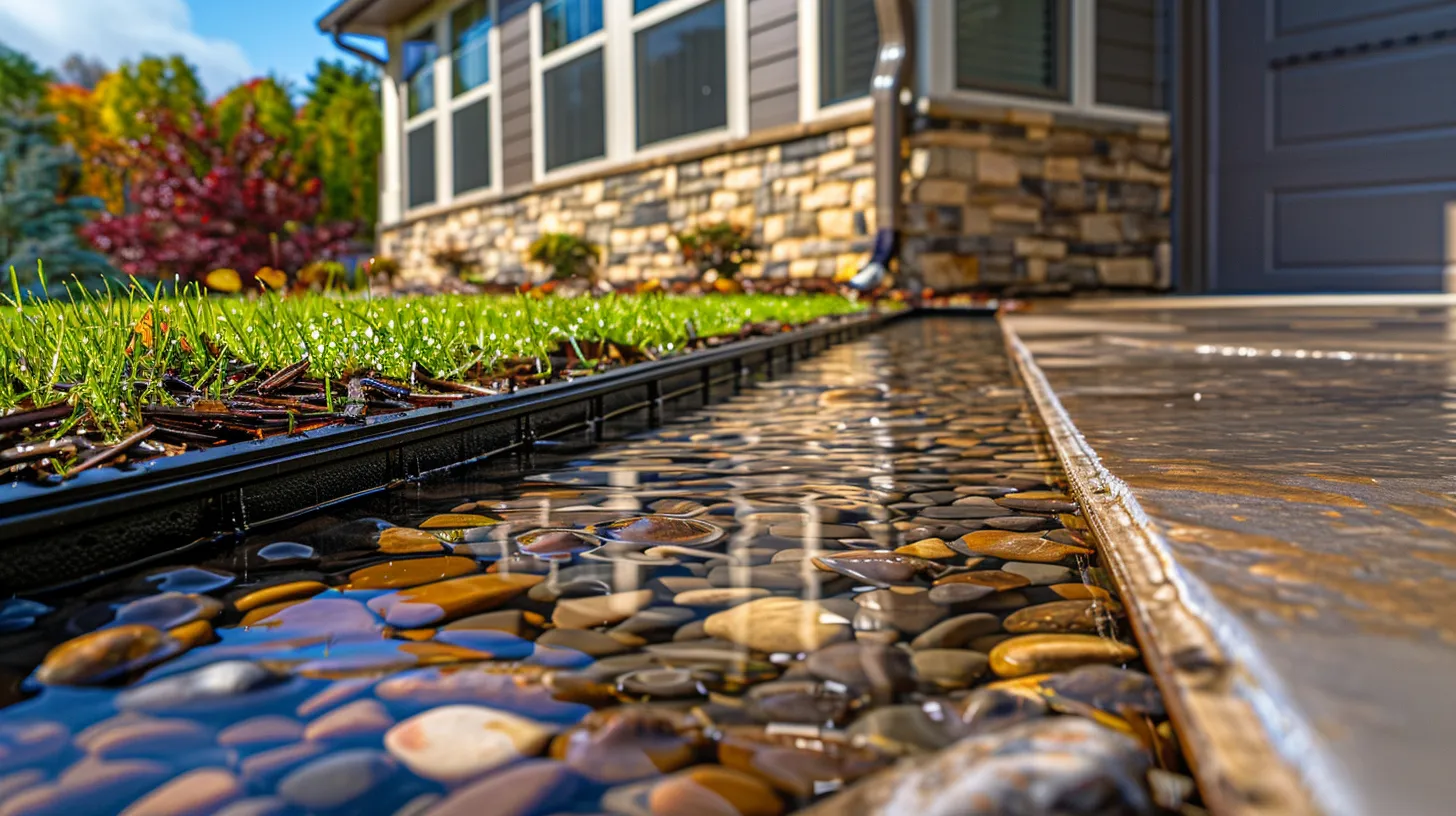
Homeowners must prioritize the maintenance of drainage and waterproofing systems to prevent costly issues. Regular gutter cleaning and inspection help ensure effective water diversion, while monitoring yard grading and addressing settling is crucial for directing water away from foundations. Annual checks of drainage systems, like French drains, along with thorough inspections of foundation walls for cracks or dampness, provide early detection of problems. Recognizing when to consult professionals for comprehensive assessments further safeguards against potential damage.
Regular gutter cleaning and inspection are essential practices for homeowners looking to prevent waterproofing issues linked to poor drainage. By clearing debris and ensuring gutters direct water away from the foundation, homeowners can significantly minimize the risk of water infiltration and structural damage. It is advisable to establish a schedule for gutter maintenance at least twice a year, particularly before and after the rainy season, to maintain optimal performance and safeguard the home from excess moisture.
Monitoring yard grading and addressing settling are crucial practices for homeowners to ensure effective drainage and prevent waterproofing failures. Regularly assessing the slope of the landscape can help identify areas where water may accumulate, leading to potential issues with moisture intrusion in basements and crawl spaces. Adjusting the grading to direct water away from the foundation not only protects structural integrity but also contributes to the overall health of the property.
Conducting annual checks on drainage systems like French drains is essential for homeowners seeking to prevent waterproofing issues. These inspections should focus on ensuring that the drains are clear of debris and functioning properly, as blockages can lead to water pooling and increased pressure around the foundation. By proactively maintaining these systems, homeowners can mitigate potential water intrusion risks and protect the structural integrity of their properties:
Regularly inspecting foundation walls for new cracks or signs of dampness is crucial for homeowners aiming to maintain effective waterproofing solutions. Early detection of these issues allows for prompt action, preventing further damage and costly repairs associated with water intrusion. Homeowners should examine both interior and exterior walls for any visible changes, as this can indicate underlying problems related to poor drainage and moisture management:
Homeowners should consider contacting professionals for drainage and waterproofing assessment when they notice persistent dampness, water stains on walls, or an increase in humidity levels within their living spaces. These signs often indicate underlying issues that require expert evaluation and intervention. Professionals can provide tailored solutions to effectively address drainage problems, ensuring long-term protection against moisture intrusion and preserving the integrity of the home.
Understanding the connection between poor drainage and waterproofing issues is crucial for homeowners aiming to protect their properties. Inadequate drainage leads to significant problems such as basement leaks, mold growth, and structural damage. Homeowners must prioritize effective drainage solutions, including proper landscape grading, regular maintenance of gutters, and the installation of advanced waterproofing systems. By proactively addressing these challenges, they can maintain a safe, dry, and healthy living environment while safeguarding their investment.